Did you know that up to 79% of runners face foot injuries at some point in their running journey? Foot problems can be a significant hurdle for runners, impacting their performance and overall enjoyment of the sport.
In this article, we delve into the world of common foot problems for runners, exploring their causes, symptoms, and most importantly, how to prevent them. Get ready to lace up your shoes and step into a world where happy feet make for happy miles!Insert
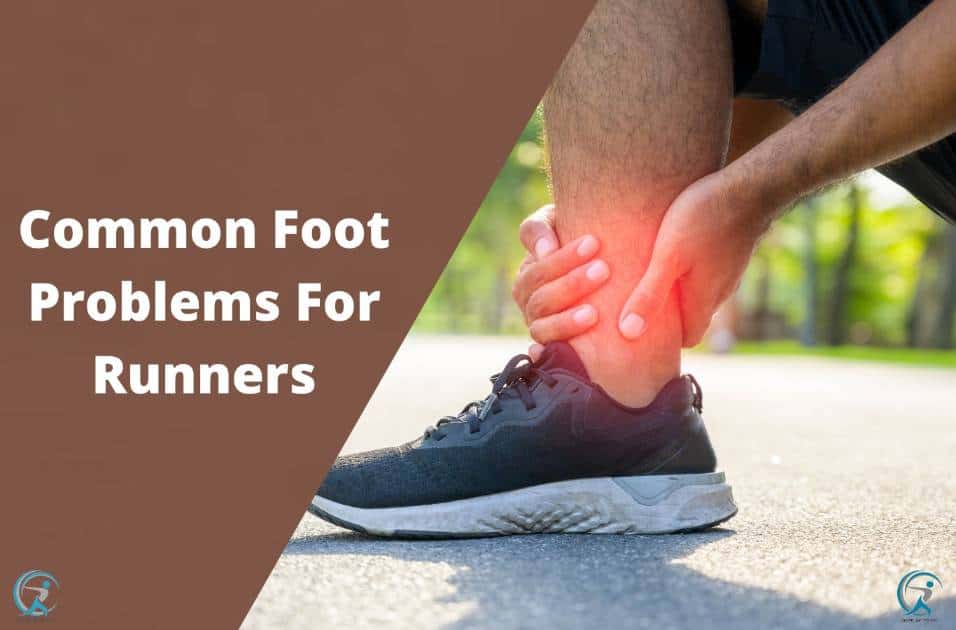
Key Takeaways:
- Common Foot Problems for Runners:
- Plantar fasciitis, Achilles tendonitis, arthritis, athlete’s foot, metatarsalgia, turf toe, stress fractures, shin splints, blisters, black toenail, bunions, calluses, corns, diabetic neuropathy, hammer’s toe, Morton’s neuroma.
- Prevention Tips:
- Get fitted for the right shoes, use compression socks, stretch before and after running, consider anti-inflammatory medications, rest when needed, elevate and ice the foot, do strengthening exercises, and pay attention to any signs of foot pain.
Common foot problems for runners
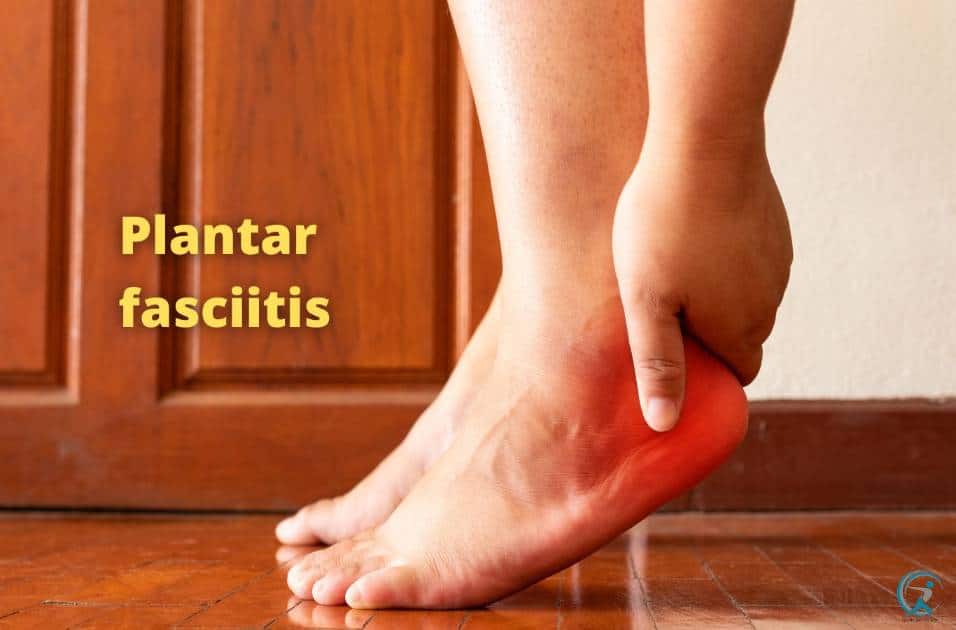
Plantar fasciitis
Plantar fasciitis or plantar fascia tendonitis is an inflammation of the plantar fascia, a thick band of tissue connecting your heel bone to your toes. When it becomes inflamed due to overuse, it can cause pain in the bottom of your foot and become very tender when you get up after resting.
The most common symptom of plantar fasciitis is heel pain or the bottom of the foot when you first get out of bed in the morning. The pain usually goes away as you move around throughout the day, but there will still be some discomfort when lying down again at night. Other symptoms include swelling around where the plantar fascia meets either side of your heel bone (this area’s known as a “heel spur”), redness along this part of your foot, and tenderness when pressing down on various spots along this region (like with a thumb).

Achilles tendonitis
Achilles tendonitis is an inflammation of the Achilles tendon. It is caused by overuse or by a sudden increase in exercise intensity.
Runner’s heel, which causes pain outside your heel, occurs when you land on your heels instead of your forefoot while running. Runner’s knee is an inflammation at the front of your knee joint that typically worsens with repetitive impact activities like running and jumping sports. Pain may be sharp and concentrated in one spot or felt more diffusely throughout all parts of the joint.
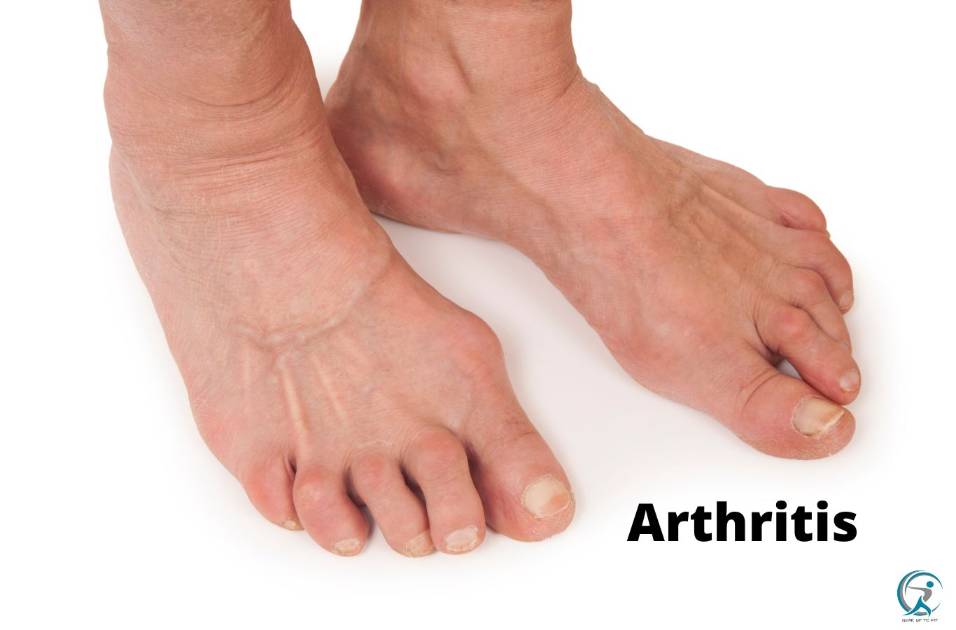
Arthritis
Arthritis is a condition that causes inflammation of the joints. It can be caused by overuse, injury, or obesity. There are many different types of arthritis. Therefore, treatments that work for one person may not work for another. Some common treatments include medication and rest.
Athlete’s foot
Athlete’s foot is a condition that causes scaling and cracking of the skin on the feet. It is also known as tinea pedis, or “ringworm of the foot.” An athlete’s foot can be uncomfortable and unsightly, but it usually isn’t serious.
Athletes’ foot affects up to 20% of people in the United States at some point in their lives. Most cases occur between the ages of 15 and 30. Athlete’s foot occurs when a fungus called tinea pedis (ringworm) infects your skin. This fungus can grow in warm, moist places like shoes or shower floors. It spreads through contact with an infected person or item, such as towels or footwear.

Metatarsalgia
Metatarsalgia is a common foot problem for runners. It’s characterized by pain in the ball of the foot—the part that meets the ground when you take a step. Other symptoms are tenderness and swelling in this area, especially if you’ve been running for an extended period.
You might have metatarsalgia if you:
- Overpronate (your feet roll inward while running)
- Have flat feet or high arches?
- Wear shoes that are too tight or too small.
Turf toe
A turf toe is a sprain of the ligaments on the top of your foot. It can occur in football players, who are most at risk for this injury because they play on artificial turf. The turf creates a harder surface than grass, which makes it more likely for you to twist your foot as you land or pivot. In addition, the shoes worn by football players may not provide enough support for their feet when playing on hard surfaces.
Suppose you’re at risk of turf toe. In that case, it helps to wear shoes with good arch support and proper cushioning that absorbs shock better than regular running shoes do—this prevents injuries from occurring during impact activities like jumping or landing after running fast downstairs. Ensure that your socks are loose enough, so they don’t get caught underneath your foot while walking or running; otherwise, this could contribute to further damage over time!
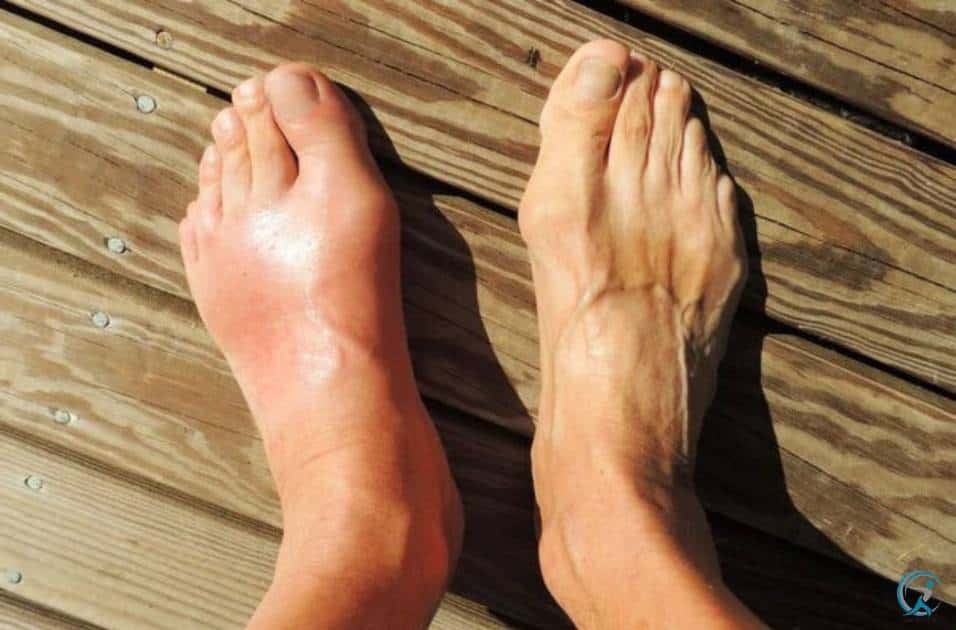
Stress fractures
Stress fractures occur when a bone is stressed beyond its ability to adapt, resulting in a small crack. This can happen when you run long distances, especially on hard surfaces such as asphalt or concrete, where your feet have little cushioning. Stress fractures are most common in the foot and lower leg bones but can also occur less frequently in other body parts (such as the hands). The most common sites for stress fractures include:
- The navicular bone at the base of the big toe
- Metatarsals (the long bones between your toes)
- The tibia and fibula are the two bones that make up your shin.
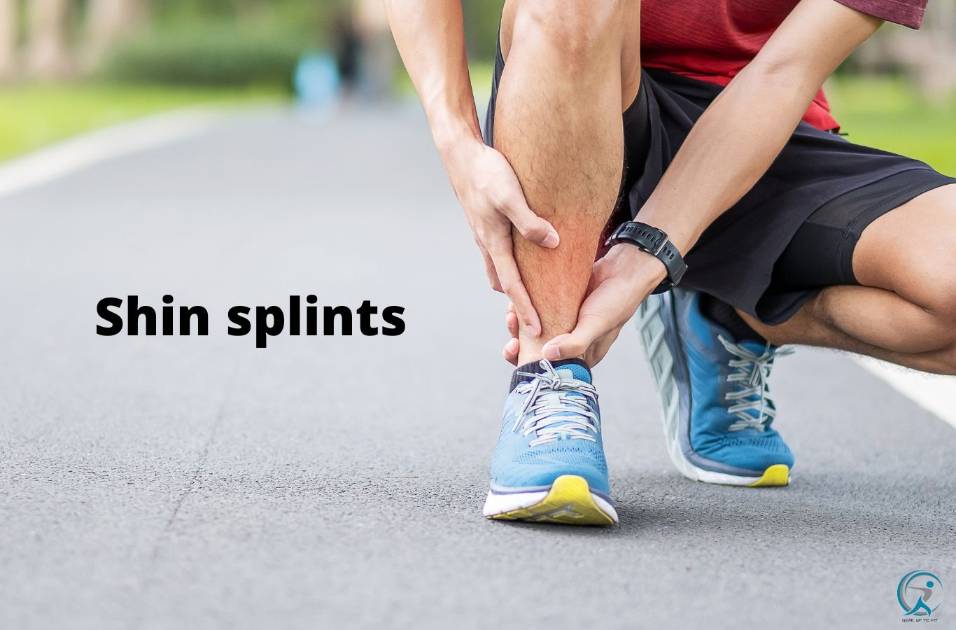
Shin splints
Shin splints are a common running injury when the muscles and tendons in the lower leg become inflamed due to overuse. Symptoms of shin splints include pain in the front of your lower leg, especially along the inner aspect of your shinbone, which can spread to behind your knee and down into your ankle. If left untreated, shin splints can lead to serious problems like stress fractures or compartment syndrome.
To treat shin splints,
- Rest. Take some time off from running (and any other activity that may irritate your thighs) until you’re feeling better. Try foam rolling or other self-care methods at home to help relieve muscle tension while recovering from more intensive treatments like physical therapy or surgery—or even if they aren’t an option for you!
- Ice it up! Apply cold packs directly over your shins after exercise (any time during the day will do) for 10 minutes; repeat as often as needed throughout the day/night until symptoms subside completely. Keep up with icing even after symptoms have gone away so that inflammation doesn’t return quickly upon resuming exercise later on down the road.
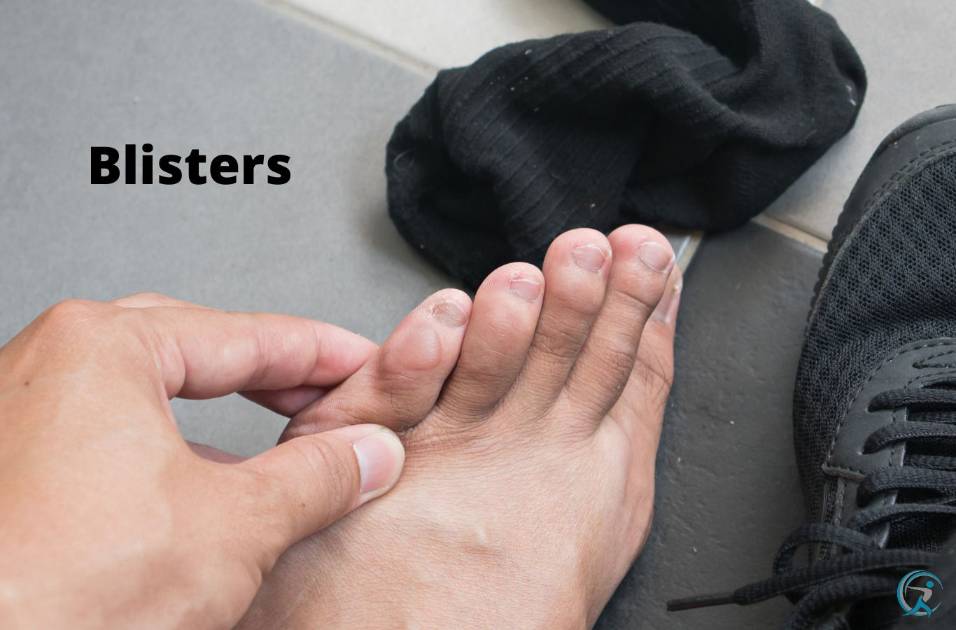
Blisters
Blisters are common among runners, and they’re usually caused by friction. You should be especially careful to prevent them if you have a shoe that pinches or rubs anywhere on your foot.
If you get a blister, it’s best to avoid popping it with a needle or any other sharp object—you can cause more harm than good since the skin underneath is likely already compromised from the pressure of walking in your shoes. However, if the blister bursts on its own (often due to pressure changes), clean out any debris before applying antibiotic ointment and covering it with a gauze bandage or tape. If your blister doesn’t resolve within two weeks of treating it this way, see an experienced podiatrist for further evaluation.

Black toenail
Black toenails are caused by the same factors that cause ingrown toenails, including improper shoes and high arches. While there is no one way to prevent black toenails, staying aware of your body’s needs can help you identify when something might be off. If you notice pain or discomfort in your feet at the end of a run, that could mean that you need new shoes or insoles. Similarly, it may be time for custom orthotics or shoe inserts if you have particularly high arches.
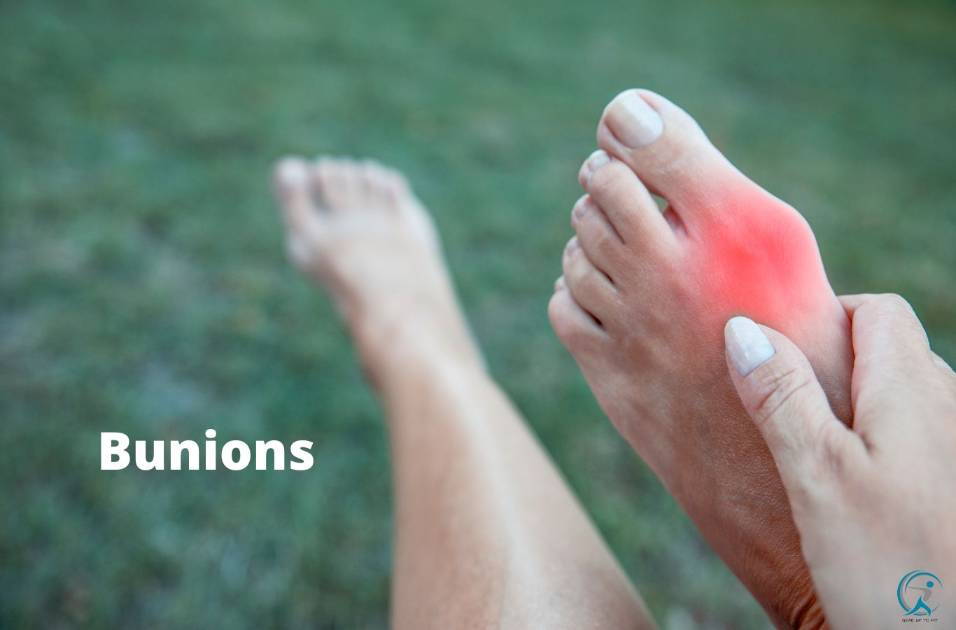
Bunions
If you get frequent pain in your big toe and the joint at the base of your big toe, you may have a bunion. A bunion is a joint deformity at the base of your big toe, which attaches to your foot. It can cause pain and swell in this area.
The cause isn’t always clear, but it usually happens when pressure from tight shoes and/or ill-fitting shoes presses on that area over time.
If you think you might have bunions, see a podiatrist who can diagnose them and recommend treatments such as surgery or other types of therapy like orthotics (shoe inserts).
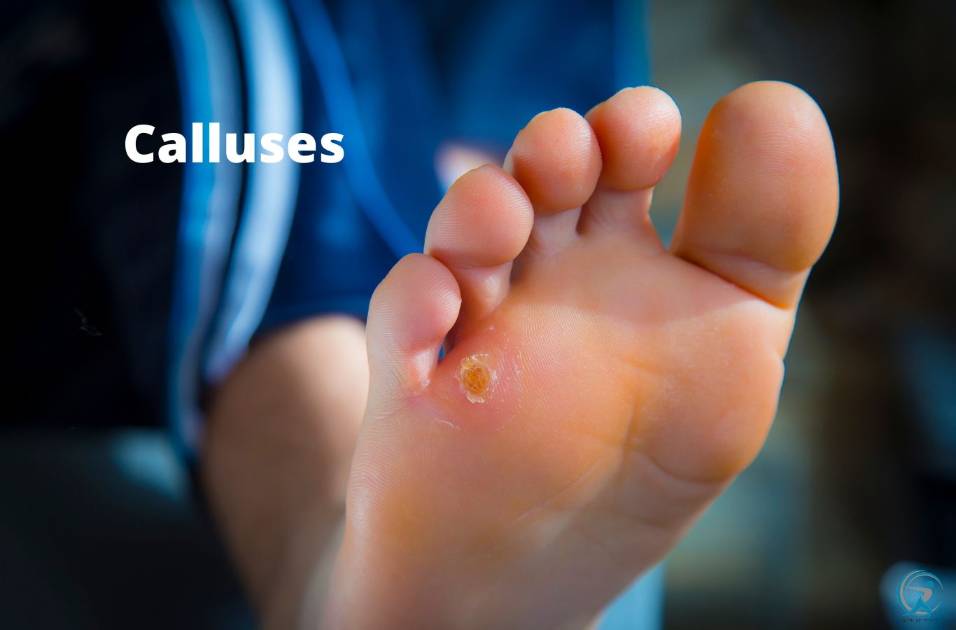
Calluses
Calluses are thick patches of hardened skin that develop when you repeatedly use the same part of your foot. Some areas of your body are more prone to calluses than others—most common on the ball of your foot or under your heel. Calluses can be painful and cause blisters, but they aren’t dangerous and don’t need to be treated by a doctor unless there’s an infection or other complication.
If you do get a callus, try these tips for treating it:
- Avoid rubbing it against hard surfaces like concrete or rough sandpaper, as this could worsen it.
- Use over-the-counter callus removers to soften the callus before trimming it with scissors.
- If you have trouble stopping yourself from picking at them, try wearing gloves (link).
Corns
Corns are caused by repeated pressure on the same spot, most commonly the high heel. They can also be caused by running shoes that don’t fit properly or even improperly fitted insoles. Corns can be treated with pumice stones and other abrasive devices, but it’s always best to avoid having corns in the first place!
Diabetic neuropathy
Diabetic neuropathy is a condition that causes numbness, tingling, and pain in your feet. It is caused by damage to the nerves in your feet, which can lead to ulcers, infections, and amputations.
If you have diabetes, there’s a good chance you’ll develop this nerve damage at some point. This can happen if you take too little insulin or blood sugar medication or eat too much sugar for a long time.
Diabetes affects more than 1 million people in the UK alone, and it’s estimated that as many as half of them will develop diabetic neuropathy at some point during their lives.
Hammer’s toe
Hammer’s toe is a condition in which the toes are bent at the middle joint. The most common cause of hammer toes is wearing shoes that are too small and make your feet stiff, causing you to push on them excessively. The Hammer toe can be corrected by stretching the toe.
To stretch your foot, place a towel under it and bear down as hard as possible for 10 seconds at a time (do not use your hand). Repeat this exercise every hour of every day for about two weeks until you see an improvement in the appearance of your foot. This is effective because it stretches out the muscles holding up your toes and makes them “hammer-like.” Once these muscles have been stretched enough to allow for better blood flow, you’ll start seeing improvements within 1-2 months!
Calluses
Calluses are thick patches of hardened skin that develop when you repeatedly use the same part of your foot. Some areas of your body are more prone to calluses than others—most common on the ball of your foot or under your heel. Calluses can be painful and cause blisters, but they aren’t dangerous and don’t need to be treated by a doctor unless there’s an infection or other complication.
If you do get a callus, try these tips for treating it:
- Avoid rubbing it against hard surfaces like concrete or rough sandpaper, as this could worsen it.
- Use over-the-counter callus removers to soften the callus before trimming it with scissors.
- If you have trouble stopping from picking at them, try wearing gloves (link).
Corns
Corns are caused by repeated pressure on the same spot, most commonly the high heel. They can also be caused by the running shoe that don’t fit properly or even by improperly fitted insoles. Corns can be treated with pumice stones and other abrasive devices, but it’s always best to avoid having corns in the first place!
Diabetic neuropathy
Diabetic neuropathy is a condition that causes numbness, tingling, and foot pain. It is caused by damage to the nerves in your feet, which can lead to ulcers, infections, and amputations.
If you have diabetes, there’s a good chance you’ll develop this nerve damage at some point. This can happen if you take too little insulin or blood sugar medication or eat too much sugar for a long time.
Diabetes affects more than 1 million people in the UK alone, and it’s estimated that as many as half of them will develop diabetic neuropathy at some point during their lives.
Morton’s neuroma
Morton’s neuroma thickens the nerve that runs between your toes. Symptoms include pain and numbness in your toes, especially while walking or running.
This condition may be caused by wearing shoes with a tight toe box (the area where your toes go). It can also result from an underlying problem such as hammertoe, which causes one or more of your toes to curl under the others.
Morton’s neuroma is usually treated with surgery or by wearing shoes with a wider toe box.
Metatarsal bones
The metatarsal bones are the five long bones that connect the tarsus (ankle) to the phalanges (toes). The metatarsals are numbered from one to five, with one closest to the heel and five closest to the toes. They are situated between the tibia, which runs down the front of your lower leg, and your talus (ankle bone).
Metatarsals can be injured by overuse, stress fractures, or trauma. Overuse injuries are caused by repetitive stress on a joint or another body part; they’re common in runners because they put a lot of pressure on their feet as they pound the pavement. Stress fractures occur when your foot absorbs more force than it can handle—for example, if you try to run with an injury or over-train for a race. Trauma is any sudden impact or injury that causes damage to bones or other soft tissues in your body.
How to prevent common foot injuries for runners?
As a runner, you know your feet must be tip-top to perform at your best. But it’s not always easy to keep your feet healthy. Your feet are under constant pressure. They’re pounding on the pavement or other surfaces throughout your runs, which can cause pain and inflammation. If you’re not careful, you can develop common foot problems like blisters, calluses, and even more serious ones like stress fractures and plantar fasciitis.
Fortunately, you can do plenty of things to prevent common foot problems for runners. Read on for tips on how to keep your feet happy and healthy!
If you’re a runner, there’s a good chance you’ve dealt with foot pain at one point or another. Luckily, you can do many things to prevent common foot problems for runners—and they’re all super easy!
The most important thing is to get fitted for the right shoes. When you go shopping for running shoes, make sure they fit your feet well and that you’re getting the right kind of support. If you don’t know what kind of support is right for your feet and what type of shoe will work best for them, ask an expert!
You can avoid a lot of pain if you pay attention to your feet!
The good news is that most foot problems can be avoided, treated, and prevented. It’s simply a matter of paying attention to your body, taking care of it, and seeking help if you notice anything unusual.
If your feet start hurting after running, here are some things to try:
The first thing I always recommend is ice!
It helps reduce inflammation and swelling in the area where it hurts. Just put some ice in a plastic baggie, wrap it up in a towel, and apply it to the painful spot on your foot for about 20 minutes each day until it feels better. Foot problems can cause pain in the feet, ankles, and knees.
Get your shoes professionally fitted.
The best way to avoid foot problems is by wearing the right shoes for your activity level (running, walking), choosing shoes with proper support and cushioning for where you need them most (ankle or heel), and rotating pairs whenever possible. Hence, they have time to dry out between wearings and stretching before running or exercising.
The first step to preventing common foot problems is to get fitted for running shoes. You may not know this, but the wrong shoes can cause many problems. Your feet will thank you later!
Use compression socks after exercise.
If you’ve just finished running, ensure that your feet get the support they need with compression socks. The tighter fit will reduce swelling and speed recovery time, making your feet feel better sooner than later!
Stretching before and after running
Stretching before and after running helps keep muscles loose and healthy so that they don’t become overworked or strained during exercise—which can lead to injuries like shin splints or plantar fasciitis (ouch!).
Anti-inflammatory medications
After that, I recommend taking an anti-inflammatory like ibuprofen or naproxen sodium (like Aleve). These medications can help reduce inflammation and pain as well as swelling around the affected area so that it’s easier for blood to flow through the foot.
Conclusion
Runners, take note: up to 79% of runners face foot injuries. These problems can hinder performance and enjoyment. Dive into common foot issues, their prevention, and lace up for a journey where happy feet lead to happy miles!
So, with that said, it is good to note that shoes are a very important part of running. The right pair can help prevent many common injuries and keep you injury-free for the long run! We hope this post has given you insight into what kinds of injuries may occur for runners like yourself.
Remember, the right shoes, compression socks, stretching, anti-inflammatory meds, rest, ice, strengthening exercises, and early pain detection are key to keeping your feet healthy and pain-free. Prioritize your foot health for smoother runs!
As a veteran fitness technology innovator and the founder of GearUpToFit.com, Alex Papaioannou stands at the intersection of health science and artificial intelligence. With over a decade of specialized experience in digital wellness solutions, he’s transforming how people approach their fitness journey through data-driven methodologies.